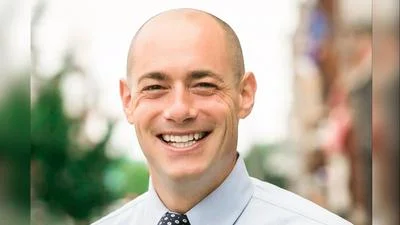Cathann Kress/ dean of the College of Food, Agricultural, and Environmental Sciences | Ohio State University Extension
Cathann Kress/ dean of the College of Food, Agricultural, and Environmental Sciences | Ohio State University Extension
Students, researchers and leaders from The Ohio State University as well as business and community leaders recently helped open the temporary home of the George Washington Carver Science Park’s (GWCSP) Starlab terrestrial analog facility.
The lab, located in the Agricultural Engineering Building on the Columbus campus, marks the launch of the first-ever science park devoted to space research. The space park is a collaboration between Voyager Space, Ohio State, the State of Ohio, JobsOhio and One Columbus, and will house a replica laboratory of the Starlab space station developed by Nanoracks and associated facilities, enabling researchers to prepare, evaluate, validate and test spaceflight experiments, and conduct parallel research on the ground.
“This partnership that we have at The Ohio State University with Starlab and the George Washington Carver Science Park will produce numerous opportunities for research, for outreach and extension and collaboration,” said Cathann Kress, vice president for agricultural administration and dean of the College of Food, Agricultural, and Environmental Sciences. “Not just for our college, not just for the College of Engineering, but for all of The Ohio State University and the greater Ohio agricultural research community and other components of the state of Ohio.”
“As the commercial space industry grows, the university is committed to supporting it. Creating opportunity is what we do best,” said Hiroyuki Fujita, chair of the university Board of Trustees. “Ohio State is one of the top destinations in the country for industry-sponsored research funding.”
Research conducted at the GWCSP terrestrial facility will involve the College of Engineering, CFAES, the College of Medicine and the College of Arts and Sciences, along with key research centers, faculty, staff and students from across Ohio State. Some of the research will focus on ways to preserve Ohio’s water quality, improve crop genetics and production efficiency, and enhance animal health for Ohio’s agricultural community.
The collaboration between researchers across the university as well as in government and industry makes the new science park an exciting opportunity.
“One of the things that makes Ohio State so special, and you see it here today, is our approach to research, research that doesn’t simply sit on the shelf or in a journal,” said Peter Mohler, interim executive vice president for research, innovation and knowledge. “[It’s] research that is based on market needs, research that is curiosity-driven but solutions-oriented.”
“Agriculture and aerospace continue to be huge growth industries, and the past decade has seen unprecedented investment and accelerated investment in aerospace into the market of commercial space flight,” said John M. Horack, Neil Armstrong Chair in Aerospace Policy and lead researcher for the Starlab collaboration. “This has opened, and I think it’s opened in a figurative and literal sense, an entirely new frontier for exploration, research, education and fulfillment of key national objectives.”
Kenny McDonald, president and CEO of the Columbus Partnership, said the collaboration between Ohio State, as well as state and local partners and industry leaders, offers an exciting opportunity for the region.
"This is a project of global significance, and we're proud that it is being executed here in Ohio," he said.
In the future, the GWCSP will operate in a stand-alone facility on the Ohio State Aerospace and Air Transportation Campus, home to the university airport, Ohio State’s Aerospace Research Center, Knowlton Executive Flight Terminal and Education Center, and a range of corporate, government and private aviation and aerospace activities.
Jeffrey Manber, president of International and Space Stations at Voyager Space, said the name of the science park was no accident. It honors the legacy of the famed American agricultural scientist and inventor who developed hundreds of food products and practical, sustainable farming methods.
Manber compared the partnership with Ohio State with the partnership between Rice University and NASA, which eventually established the Lyndon B. Johnson Space Center.
“Here we are in a non-traditional space location with another great university [leasing] land, not to the government. … It’s not to a government, but it’s to commercial. It’s to the private sector,” he said. “And we’re not using it to build up infrastructure. We’re using it to build up the knowledge base, the research base, the breakthroughs.”
Horack said the grand opening was the start of a new space age that would include Ohio State at the center of new research and innovation.
“Today we’re marking the beginning of a decades-long journey that will transform the landscape of Ohio State, the state of Ohio and the world through the pursuit of social, economic and educational quality of life outcomes that all leverage commercial space flight.”
Original source can be found here.




 Alerts Sign-up
Alerts Sign-up